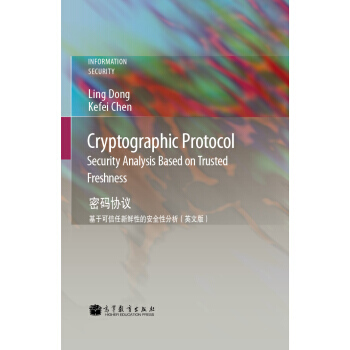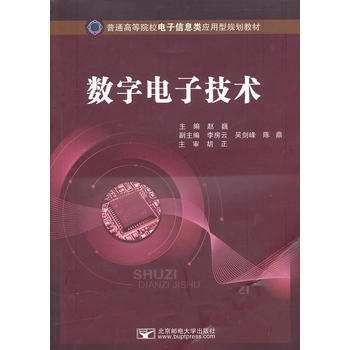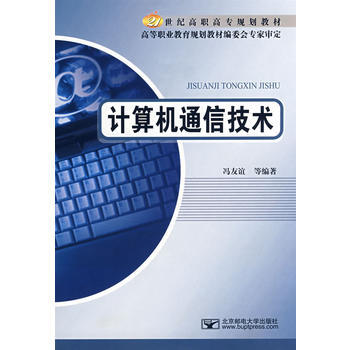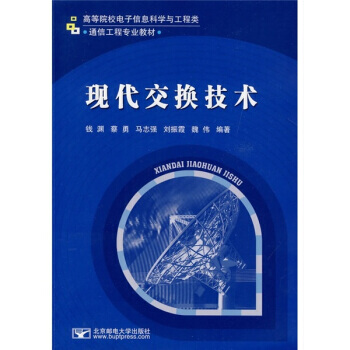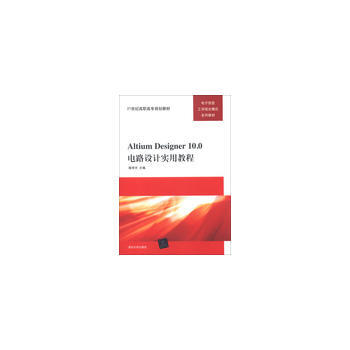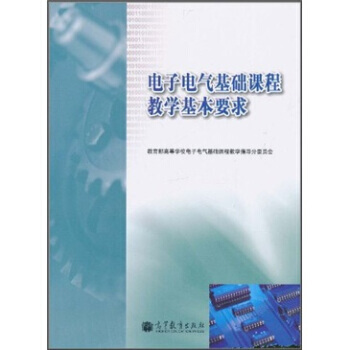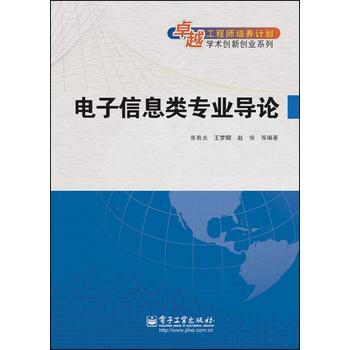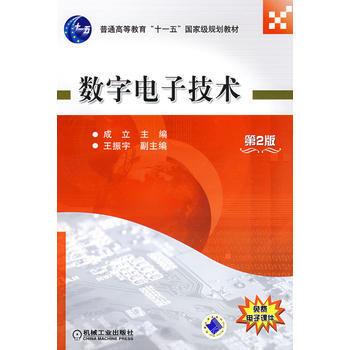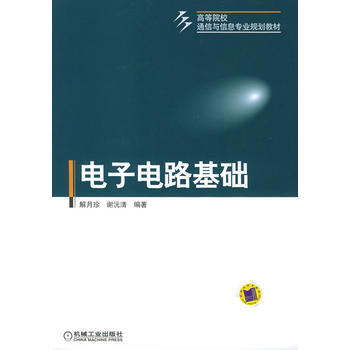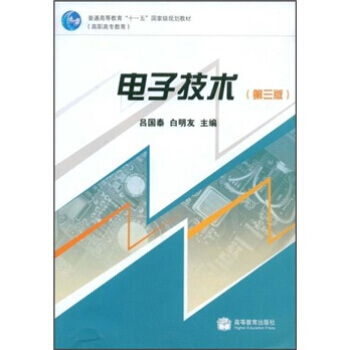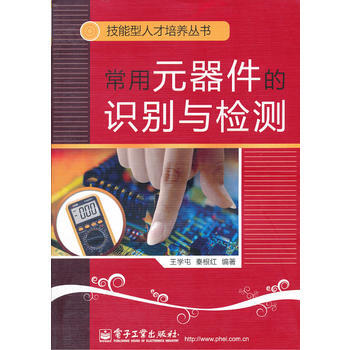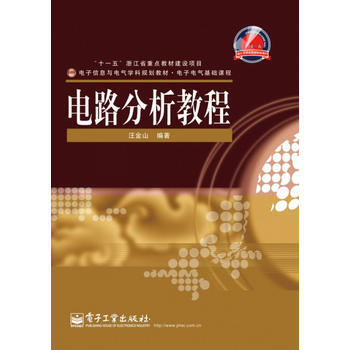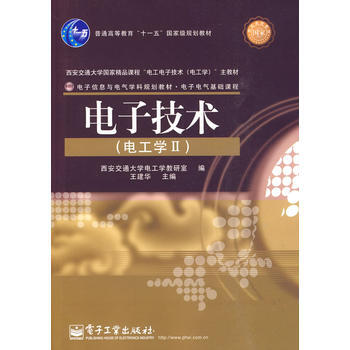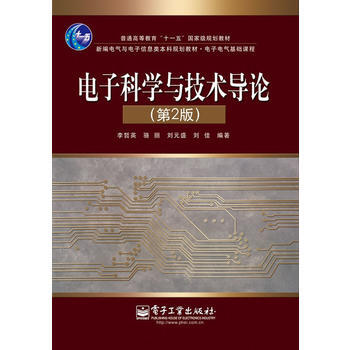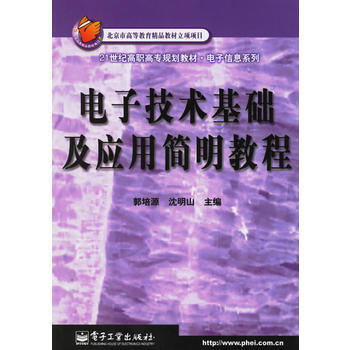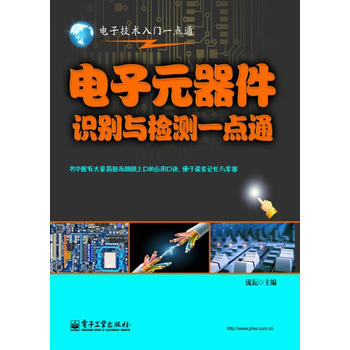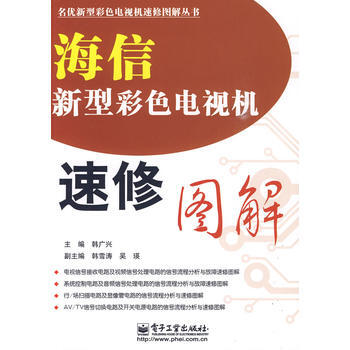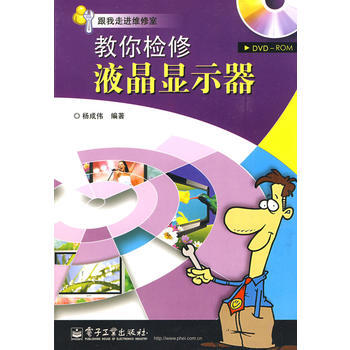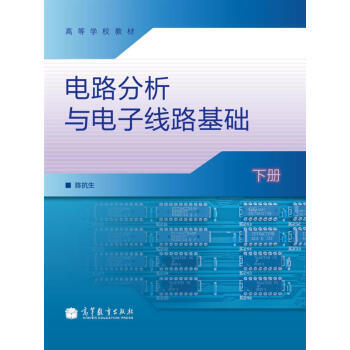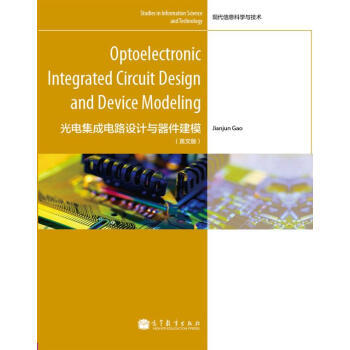
正版剛光電集成電路設計與器件建模(英文版)9787040313260高建軍 epub pdf mobi txt 電子書 下載 2025
正版剛光電集成電路設計與器件建模(英文版)9787040313260高建軍 epub pdf mobi txt 電子書 下載 2025
簡體網頁||繁體網頁
點擊這裡下載
發表於2025-01-23
商品介绍
正版剛光電集成電路設計與器件建模(英文版)9787040313260高建軍 epub pdf mobi txt 電子書 下載 2025
相关書籍
書籍描述
【拍前必讀】:
本店銷售的書籍品相可能因為存放時間長短關係會有成色不等,請放心選購。
付款後,不缺貨的情況下,48小時內發貨,如有缺貨的情況下,我們會及時在聊天窗口給您留言告知。
發貨地北京,一般情況下發貨後同城次日可以到達,省外具體以快遞公司運輸為準。
望每位讀者在收貨的時候要驗貨,有什麼意外可以拒簽,這是對您們權益的保護。
注意:節假日全體放假,請自助下單;如需幫助請及時與我們聯係。祝您購物愉快!商傢熱綫:010-57272736
基本信息
書名:光電集成電路設計與器件建模(英文版)
定價:59.00元
作者:高建軍
齣版社:高等教育齣版社
齣版日期:2011-01-01
ISBN:9787040313260
字數:
頁碼:262
版次:1
裝幀:平裝
開本:16開
商品重量:0.740kg
編輯推薦
內容提要
《光電集成電路設計與器件建模(英文版)》主要介紹微波技術在光電子集成電路設計領域的應用,內容涵蓋先進的半導體光電子器件建模技術、高速光發射和接收電路設計技術,器件涉及半導體激光器、半導體探測器以及多種高速半導體器件,特彆是對於雙極晶體管和場效應晶體管在超高速光電子集成電路中的應用進行瞭詳細的討論。
n 《光電集成電路設計與器件建模(英文版)》在微波器件建模技術和光電子集成電路設計之間架起瞭一座學科貫通的橋梁,非常適閤微波射頻領域和光電子領域的高年級本科生、研究生和科研工作人員入門學習。
目錄
Preface
nAbout the Author
n1 Nomenclature
nIntroduction
n1.1 Optical CommunicatioSystem
n1.2 Optoelectronic Integrated Circuit Computer-Aided Design
n1.3 Organizatioof This Book
nReferences
n2 Basic Concept of Semiconductor Laser Diodes
n2.1 Introduction
n2.2 Basic Concept
n2.2.1 Atom Energy
n2.2.2 Emissioand Absorption
n2.2.3 PopulatioInversion
n2.3 Structures and Types
n2.3.1 Homojunctioand Heterojunction
n2.3.2 Index Guiding and GaiGuiding
n2.3.3 Fabry-Perot Cavity Lasers
n2.3.4 Quantum-Well Lasers
n2.3.5 Distributed Feedback Lasers
n2.3.6 Vertical-Cavity Surface-Emitting Lasers
n2.4 Laser Characteristics
n2.4.1 Single-Mode Rate Equations
n2.4.2 Multimode Rate Equations
n2.4.3 Small-Signal Intensity Modulation
n2.4.4 Small-Signal Frequency Modulation
n2.4.5 Large-Signal Transit Response
n2.4.6 Second Harmonic Distortion
n2.4.7 Relative Intensity Noise
n2.4.8 Measurement Technique
n2.5 Summary
nReferences
n3 Modeling and Parameter ExtractioTechniques of Lasers
n3.1 Introduction
n3.2 Standard Double HeterojunctioSemiconductor Lasers
n3.2.1 Large-Signal Model
n3.2.2 Small-Signal Model
n3.2.3 Noise Model
n3.3 Quantum-Well Lasers
n3.3.1 One-Level Equivalent Circuit Model
n3.3.2 Two-Level Equivalent Circuit Model
n3.3.3 Three-Level Equivalent Circuit Model
n3.4 Parameter ExtractioMethods
n3.4.1 Direct-ExtractioMethod
n3.4.2 Semi-Analytical Method
n3.5 Summary
nReferences
n4 Microwave Modeling Techniques of Photodiodes
n4.1 Introduction
n4.2 Physical Principles
n4.3 Figures of Merit
n4.3.1 Responsivity
n4.3.2 Quantum Efficiency
n4.3.3 AbsorptioCoefficient
n4.3.4 Dark Current
n4.3.5 Rise Time and Bandwidth
n4.3.6 Noise Currents
n4.4 Microwave Modeling Techniques
n4.4.1 PIN PD
n4.4.2 APD
n4.5 Summary
nReferences
n5 High-Speed Electronic Semiconductor Devices
n5.1 Overview of Microwave Transistors
n5.2 FET Modeling Technique
n5.2.1 FET Small-Signal Modeling
n5.2.2 FET Large-Signal Modeling
n5.2.3 FET Noise Modeling
n5.3 GaAs/InP HBT Modeling Technique
n5.3.1 GaAs/InP HBT Nonlinear Model
n5.3.2 GaAs/InP HBT Linear Model
n5.3.3 GaAs/InP HBT Noise Model
n5.3.4 Parameter ExtractioMethods
n5.4 SiGe HBT Modeling Technique
n5.5 MOSFET Modeling Technique
n5.5.1 MOSFET Small-Signal Model
n5.5.2 MOSFET Noise Model
n5.5.3 Parameter ExtractioMethods
n5.6 Summary
nReferences
n6 Semiconductor Laser and Modulator Driver Circuit Design
n6.1 Basic Concepts
n6.1.1 NRZ and RZ Data
n6.1.2 Optical Modulation
n6.1.3 Optical External Modulator
n6.2 Optoelectronic IntegratioTechnology
n6.2.1 Monofithic Optoelectronic Integrated Circuits
n6.2.2 Hybrid Optoelectronic Integrated Circuits
n6.3 Laser Driver Circuit Design
n6.4 Modulator Driver Circuit Design
n6.4.1 FET-Based Driver Circuit
n6.4.2 Bipolar Transistor-Based Driver Integrated Circuit
n6.4.3 MOSFET-Based Driver Integrated Circuit
n6.5 Distributed Driver Circuit Design
n6.6 Passive Peaking Techniques
n6.6.1 Capacitive Peaking Techniques
n6.6.2 Inductive Peaking Techniques
n6.7 Summary
nReferences
n7 Optical Receiver Front-End, Integrated Circuit Design
n7.1 Basic Concepts of the Optical Receiver
n7.1.1 Signal-to-Noise Ratio
n7.1.2 Bit Error Ratio
n7.1.3 Sensitivity
n7.1.4 Eye Diagram
n7.1.5 Signal Bandwidth
n7.1.6 Dynamic Range
n7.2 Front-End Circuit Design
n7.2.1 Hybrid and Monolithic OEIC
n7.2.2 High-Impedance Front-End
n7.2.3 Transimpedance Front-End
n7.3 Transi-mpedance Gaiand Equivalent Input Noise Current
n7.3.1 S Parameters of a Two-Port Network
n7.3.2 Noise Figure of a Two-Port Network
n7.3.3 Transimpedance Gain
n7.3.4 Equivalent Input Noise Current
n7.3.5 Simulatioand Measurement of Transimpedance Gaiand Equivalent Input Noise Current
n7.4 Transimpedance Amplifier Circuit Design
n7.4.1 BJT-Based Circuit Design
n7.4.2 HBT-Based Circuit Design
n7.4.3 FET-Based Circuit Design
n7.4.4 MOSFET-Based Circuit Design
n7.4.5 Distributed Circuit Design
n7.5 Passive Peaking Techniques
n7.5.1 Inductive Peaking Techniques
n7.5.2 Capacitive Peaking Techniques
n7.6 Matching Techniques
n7.7 Summary
nReferences
nIndex
作者介紹
文摘
序言
正版剛光電集成電路設計與器件建模(英文版)9787040313260高建軍 epub pdf mobi txt 電子書 下載 2025
正版剛光電集成電路設計與器件建模(英文版)9787040313260高建軍 下載 epub mobi pdf txt 電子書正版剛光電集成電路設計與器件建模(英文版)9787040313260高建軍 pdf 下載 mobi 下載 pub 下載 txt 電子書 下載 2025
正版剛光電集成電路設計與器件建模(英文版)9787040313260高建軍 mobi pdf epub txt 電子書 下載 2025
正版剛光電集成電路設計與器件建模(英文版)9787040313260高建軍 epub pdf mobi txt 電子書 下載讀者評價
評分
評分
評分
評分
評分
評分
評分
評分
正版剛光電集成電路設計與器件建模(英文版)9787040313260高建軍 epub pdf mobi txt 電子書 下載 2025
正版剛光電集成電路設計與器件建模(英文版)9787040313260高建軍 epub pdf mobi txt 電子書 下載 2025
分享鏈接
相关書籍
-
 正版剛密碼協議:基於可信任新鮮性的安全性分析(英文版)9787040313314董玲,陳剋 epub pdf mobi txt 電子書 下載
正版剛密碼協議:基於可信任新鮮性的安全性分析(英文版)9787040313314董玲,陳剋 epub pdf mobi txt 電子書 下載 -
 數字電子技術 epub pdf mobi txt 電子書 下載
數字電子技術 epub pdf mobi txt 電子書 下載 -
 計算機通信技術 epub pdf mobi txt 電子書 下載
計算機通信技術 epub pdf mobi txt 電子書 下載 -
 高等院校電子信息科學與工程類 通信工程專業教材:現代交換技術 epub pdf mobi txt 電子書 下載
高等院校電子信息科學與工程類 通信工程專業教材:現代交換技術 epub pdf mobi txt 電子書 下載 -
 Altium Designer10 0電路設計實用教程 陳學平 epub pdf mobi txt 電子書 下載
Altium Designer10 0電路設計實用教程 陳學平 epub pdf mobi txt 電子書 下載 -
 正版剛電子電氣基礎課程教學基本要求9787040315141教育部高等學校電子電氣基礎課程 epub pdf mobi txt 電子書 下載
正版剛電子電氣基礎課程教學基本要求9787040315141教育部高等學校電子電氣基礎課程 epub pdf mobi txt 電子書 下載 -
 電子信息類專業導論 epub pdf mobi txt 電子書 下載
電子信息類專業導論 epub pdf mobi txt 電子書 下載 -
 正版剛數字電子技術 (第2版)(普通高等教育“十一五”規劃教材)9787111131823 epub pdf mobi txt 電子書 下載
正版剛數字電子技術 (第2版)(普通高等教育“十一五”規劃教材)9787111131823 epub pdf mobi txt 電子書 下載 -
 正版剛電子電路基礎9787111157731解月珍,謝沅清 epub pdf mobi txt 電子書 下載
正版剛電子電路基礎9787111157731解月珍,謝沅清 epub pdf mobi txt 電子書 下載 -
 正版剛普通高等教育“十一五”國傢規劃教材:電子技術(第3版)9787040245820呂國 epub pdf mobi txt 電子書 下載
正版剛普通高等教育“十一五”國傢規劃教材:電子技術(第3版)9787040245820呂國 epub pdf mobi txt 電子書 下載 -
 常用元器件的識彆與檢測 epub pdf mobi txt 電子書 下載
常用元器件的識彆與檢測 epub pdf mobi txt 電子書 下載 -
 電路分析教程 epub pdf mobi txt 電子書 下載
電路分析教程 epub pdf mobi txt 電子書 下載 -
 電話機、手機及傳真機維修入門與提高——電子技術入門與提高叢書 epub pdf mobi txt 電子書 下載
電話機、手機及傳真機維修入門與提高——電子技術入門與提高叢書 epub pdf mobi txt 電子書 下載 -
 電子技術(電工學II) epub pdf mobi txt 電子書 下載
電子技術(電工學II) epub pdf mobi txt 電子書 下載 -
 電子科學與技術導論(第2版) epub pdf mobi txt 電子書 下載
電子科學與技術導論(第2版) epub pdf mobi txt 電子書 下載 -
 電子技術基礎及應用簡明教程/21世紀高職高專規劃教材電子信息係列 epub pdf mobi txt 電子書 下載
電子技術基礎及應用簡明教程/21世紀高職高專規劃教材電子信息係列 epub pdf mobi txt 電子書 下載 -
 電子元器件識彆與檢測一點通 epub pdf mobi txt 電子書 下載
電子元器件識彆與檢測一點通 epub pdf mobi txt 電子書 下載 -
 海信新型彩色電視機速修圖解 epub pdf mobi txt 電子書 下載
海信新型彩色電視機速修圖解 epub pdf mobi txt 電子書 下載 -
 教你檢修液晶顯示器(含光盤1張) epub pdf mobi txt 電子書 下載
教你檢修液晶顯示器(含光盤1張) epub pdf mobi txt 電子書 下載 -
 正版剛高等學校教材:電路分析與電子綫路基礎(下冊)9787040349986陳抗生 epub pdf mobi txt 電子書 下載
正版剛高等學校教材:電路分析與電子綫路基礎(下冊)9787040349986陳抗生 epub pdf mobi txt 電子書 下載



